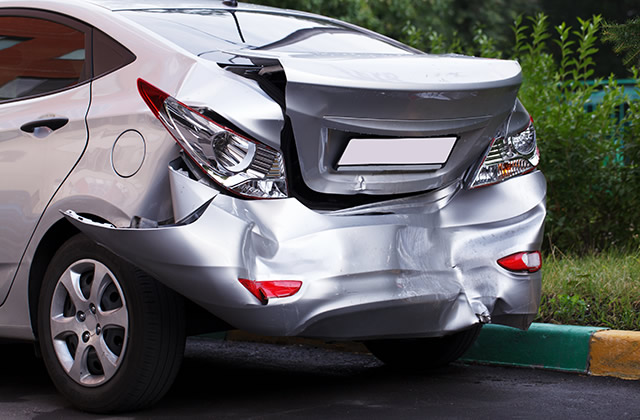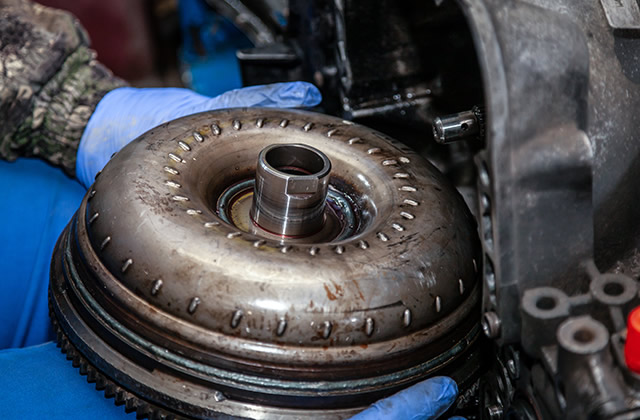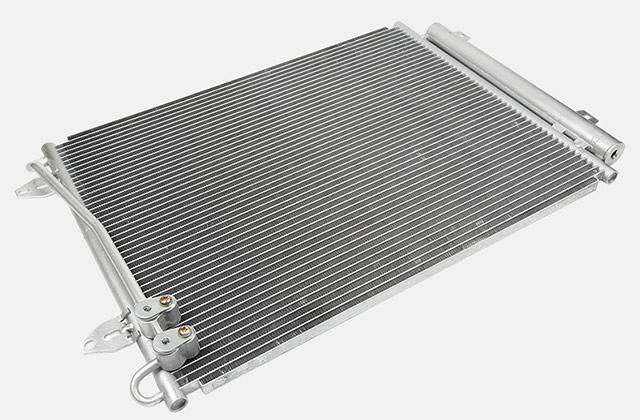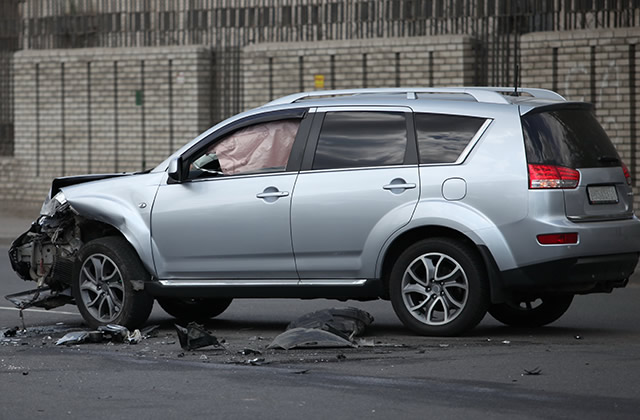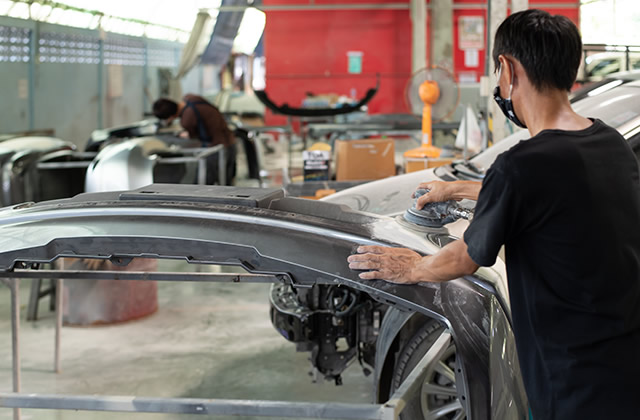What kind of brakes are there in cars?
1. Drum brakes
Drum brakes were the earliest applications in vehicles. In the braking system of the car, the brake drum is installed on the wheel and rotates with the wheel. The brake pad is installed inside. When braking, the brake piston will push the brake pad outward to create friction with the brake drum to achieve the braking effect.

Advantages: Drum brakes have a simple structure and low manufacturing costs. They are mostly used in the rear wheels of low-end cars or the braking systems of large trucks. Due to the strong braking force, many people think that drum brakes are not effective in braking, but this is not entirely true.
Disadvantages: The drum brake has a strong braking force, but the heat attenuation is obvious and the heat dissipation is poor. Since the brake working mechanism is enclosed in the brake drum, the contact surface between the brake drum and the brake pad will be reduced after thermal expansion. becomes smaller, the heat cannot be dissipated quickly after continuous braking, affecting braking efficiency. Therefore, if the braking is not for a long time, drum brakes still have certain advantages.
2. Disc brakes
Disc brakes are the most common braking system. Disc brakes use stationary brake discs to clamp The brake disc rotates with the tire to generate friction and reduce the wheel rotation speed. When the brake pedal is depressed, the piston in the brake master cylinder is pushed and pressure builds up in the brake oil circuit. The pressure is transmitted to the piston of the brake cylinder on the brake caliper through the brake fluid. After receiving the pressure, the piston of the brake cylinder will move outward and push the brake pad to clamp the brake disc, causing friction between the brake pad and the brake disc. , to reduce wheel speed.
Advantages: Disc brakes have good heat dissipation. When the brakes are stepped on continuously, they are less likely to cause brake fading and brake failure. They respond quickly, have average braking force, and have good drainage. The advantages of the disc brake system It responds quickly and can perform high-frequency braking actions, so it is more in line with the requirements of the ABS system. Disc brakes do not have the automatic braking effect of drum brakes, so the braking force of the left and right wheels is relatively average. Compared with drum brakes, Disc brakes are simple in structure and easy to repair.
There is also a higher-end ceramic brake. Due to the high cost, ceramic brake discs are widely used in super sports cars. Ceramic brake discs are much better than ordinary steel brake discs in terms of braking performance and heat dissipation, and their service life is four times that of ordinary steel brake discs.
The working principle of automobile braking device
The automobile braking system includes two types, one is hydraulic braking and the other is pneumatic braking.Braking and hydraulic braking are carried out by the brake master cylinder using brake fluid as the transmission medium through the brake pipelines to each brake cylinder. Pneumatic braking uses high-pressure gas as the braking medium and passes through the pipelines. sent to each brake cylinder.
1. Principle of hydraulic braking
The hydraulic braking device consists of a brake pedal, a brake master cylinder, a brake wheel cylinder, a wheel brake, and a brake pedal. It is composed of moving rollers, pipelines, etc. When the brake pedal is depressed, the piston pushes the master cylinder forward. The brake fluid in the cylinder generates pressure, and the oil is forced into each brake wheel cylinder through the oil pipe. At this time, the wheel cylinder piston opens outward, pushing the brake shoe to contact the brake drum, producing a braking effect.
2. Pneumatic braking principle
(1) When not braking. Both solenoid valves are non-conducting, the intake solenoid valve is normally closed, and the exhaust solenoid valve is normally open. Both diaphragm valves are closed under the action of their springs and can be braked at any time.
(2) When braking. The two solenoid valves are not conducting, and the compressed air from the brake valve enters the right side of the diaphragm intake valve. Because the intake solenoid valve is closed, the compressed air is cut off from the control air chamber on the left side of the intake diaphragm. channel. At this time, the control air chamber is vented to the atmosphere. Under the action of the pressure difference, the diaphragm air intake valve opens, and the compressed air enters the pipeline leading to the brake air chamber. And because the exhaust solenoid valve is not conducting and is in the open state, the compressed air enters the control air chamber on the right side of the diaphragm exhaust valve. Under the action of its spring force and air pressure, the diaphragm exhaust valve remains reliably closed. , the compressed air flows into the brake air chamber unimpeded, producing a follow-up braking effect.
(3) During anti-lock braking and pressure reduction. When a wheel is about to lock, the wheel speed signal is sent to the computer ECU, that is, in a duty cycle manner, the intake and exhaust solenoid valves are turned on, the intake solenoid valve is opened, the atmospheric passage is closed, and the compressed air enters it. The diaphragm valve controls the air chamber so that the diaphragm air inlet valve is closed. The exhaust solenoid valve conduction is closed, cutting off the passage between the diaphragm valve control air chamber and the compressed air, and opening the atmospheric passage. The diaphragm opens under the action of the air pressure difference, allowing the brake air chamber to communicate with the atmosphere. , the brake air pressure drops accordingly, preventing the wheel from locking.
(4) When anti-locking and maintaining pressure. When the angular velocity signal of the wheel that is about to lock is in the best state, the ECU only conducts the air intake solenoid valve to open it, and cuts off the passage between the control air chamber on the left side of the diaphragm valve and the atmosphere, and compresses the air to allow the diaphragm to inhale air. The valve closes, cutting off the passage between the brake valve and the brake chamber. Since the exhaust solenoid valve is still open and its diaphragm valve is closed, the air pressure in the brake chamber remains unchanged (double valve closed).
(5) When anti-lock braking is boosted. When the wheel speed signal of the wheel accelerates from the optimal state, the ECU immediately issues a command to disable both solenoid valves and restore the normal braking state, and the air pressure in the brake chamber increases accordingly.
The car brakes squeak
1. The brake disc or brake pad is rusted;
p>
2. New brake pads;
3. Excessive wear of brake discs and brake pads;
4. Assembly problems.
When parking for a long time, especially after a humid climate or rain, a certain amount of rust or dirt will appear on the brake disc or brake pads. This situation can be solved by driving for a while, or You can apply butter or special lubricant to the connection between the brake pad and brake caliper. A new car will make a similar sound when the brakes are applied. New brake pads and brake discs need a running-in process. This is normal. However, if the sound does not disappear after driving for a period of time, there is a problem.
If the website content violates your rights, please contact us to delete it。



